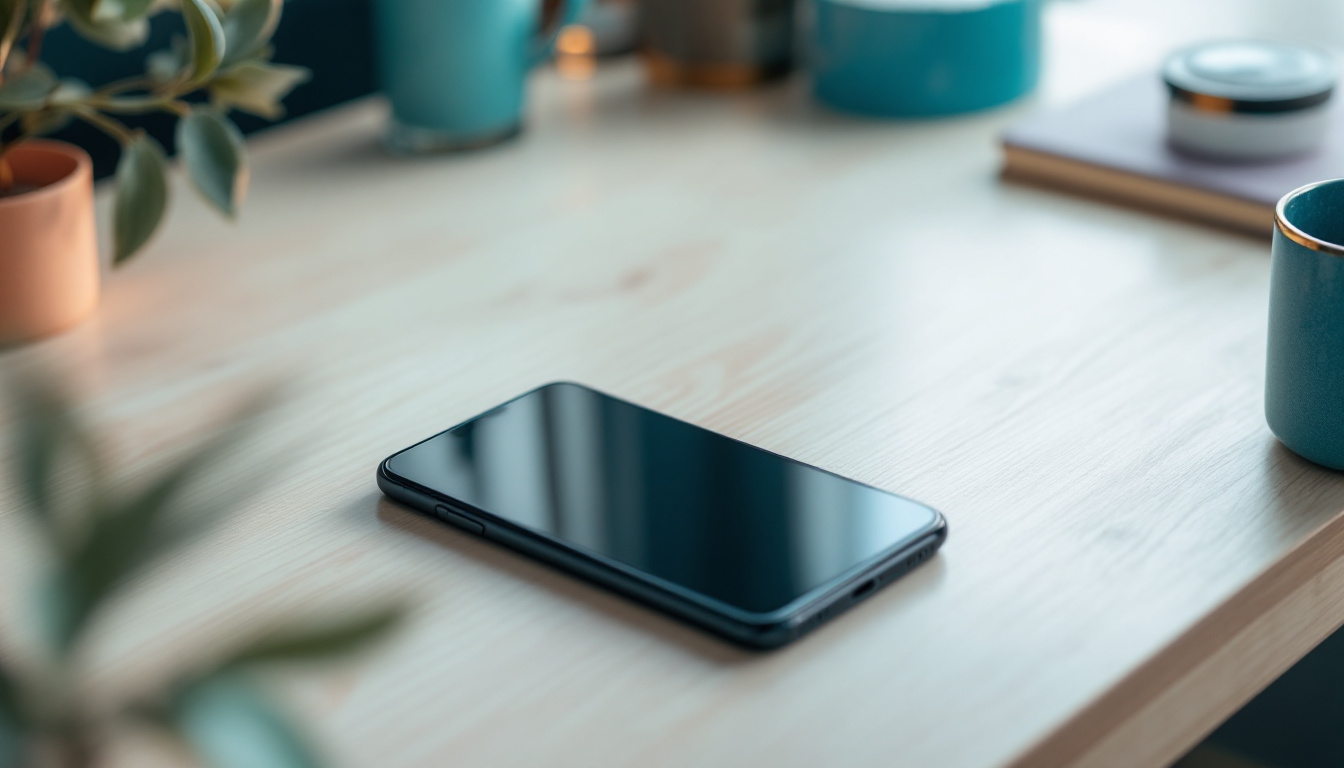Understanding the Link Between ADHD and Phone Addiction
Attention-Deficit/Hyperactivity Disorder (ADHD) and phone addiction often go hand-in-hand, as individuals with ADHD can find it particularly challenging to regulate their screen time. The impulsivity and need for instant gratification associated with ADHD make it easier to fall into patterns of excessive phone usage. Recognizing the interplay between ADHD and phone addiction is the first step in adopting strategies that can aid in reducing dependency and improving overall well-being.
The Connection Between ADHD and Phone Addiction
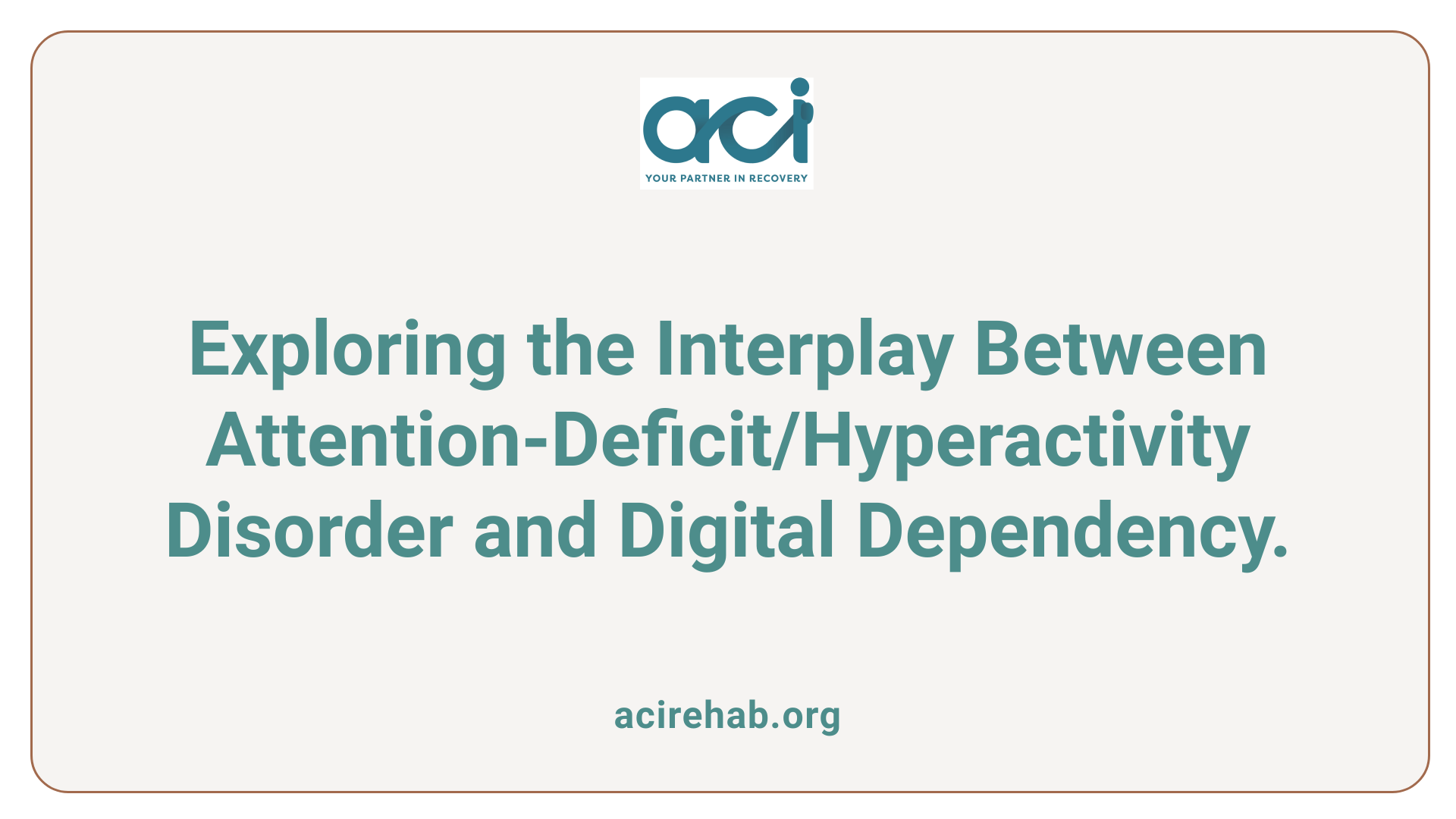
ADHD Symptoms and Phone Addiction
Individuals with ADHD often face challenges related to impulsivity and inattention, which can significantly intertwine with phone addiction. This addiction is characterized by excessive smartphone use, particularly for engaging in social media or gaming. The need for constant stimulation can lead to behaviors that distract from essential tasks, leading not only to decreased productivity but also to difficulties in personal relationships.
Symptoms of phone addiction often mirror those of ADHD, with individuals experiencing anxiety or irritability when unable to access their devices. As the ADHD brain craves higher stimulation due to lower dopamine levels, smartphones provide an immediate dopamine fix, further reinforcing compulsive use.
Why Individuals with ADHD Are Prone to Phone Addiction
The inclination towards phone addiction among those with ADHD can be traced back to several psychological and behavioral factors. Studies suggest that children with ADHD are significantly more likely to fall into patterns of Internet addiction, reportedly 9.3 times more than their peers without ADHD. This highlights a critical risk factor associated with their impulsivity and desire for instant gratification.
Smartphones allure individuals with ADHD by offering highly stimulating environments that cater to their need for constant engagement. The instant feedback provided by apps and online content becomes increasingly appealing, leading to habitual checking and excessive use.
In summary, there is a robust connection between ADHD and phone addiction that poses significant challenges for individuals, affecting their ability to focus, manage time, and maintain healthy relationships.
| Factor | Impact on Phone Usage | Consequences |
|---|---|---|
| Impulsivity | Leads to compulsive checking and usage | Disruption of daily tasks and responsibilities |
| Need for stimulation | Attraction to high-engagement apps | Increased screen time leading to reduced physical activity |
| Anxiety when disconnected | Heightened frustrations during downtime | May exacerbate mood swings and social isolation |
By understanding these connections, individuals with ADHD can develop targeted strategies to manage their phone usage effectively.
Setting Boundaries to Manage Phone Usage
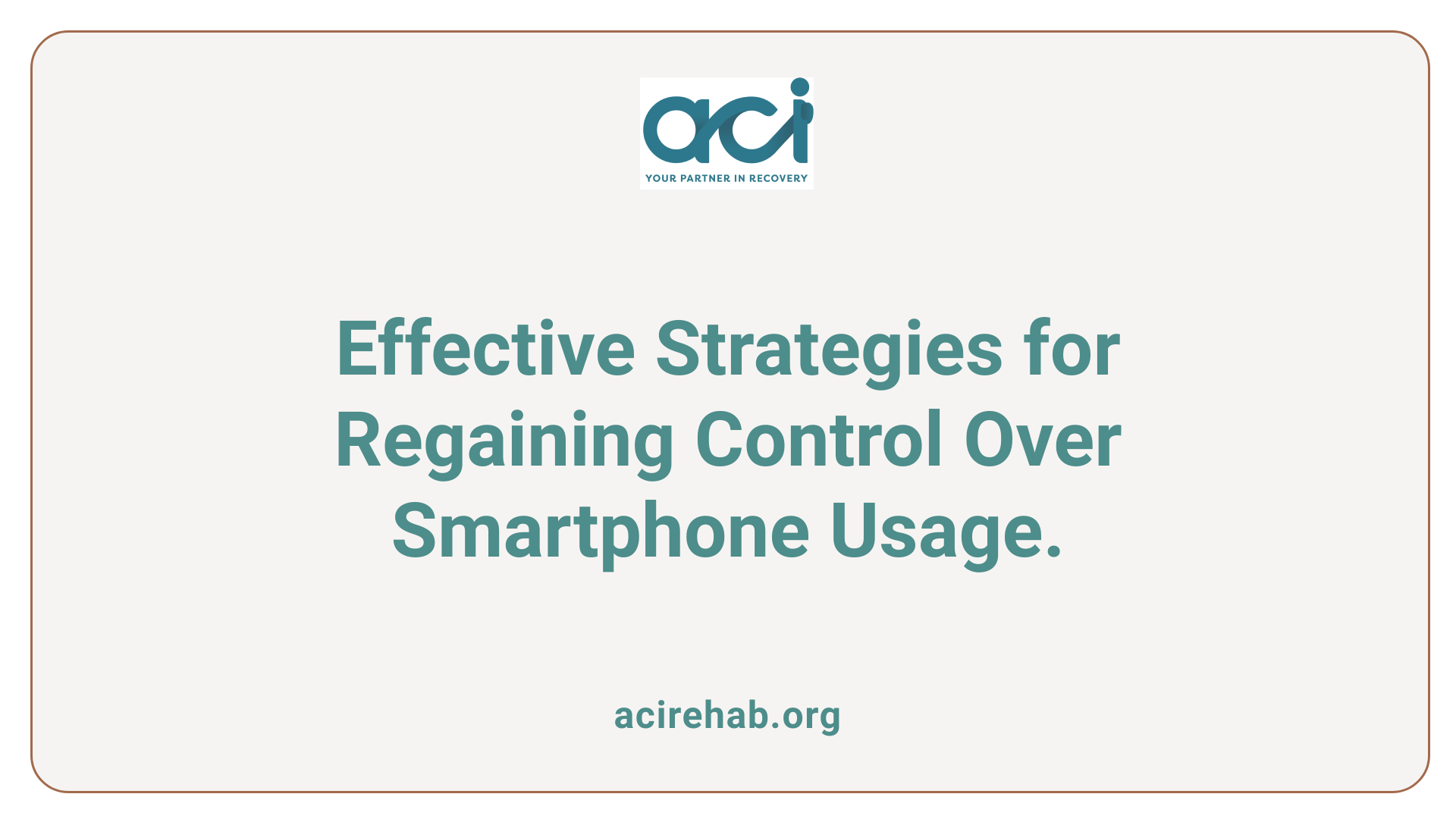
Creating Phone-Free Zones
Establishing phone-free zones within the home is a proactive approach to managing phone usage for individuals with ADHD. These spaces, like the dining room or bedrooms, encourage undistracted social interaction and improve overall mental health. Being present in these areas allows for deeper engagement in activities, fostering stronger relationships and enhanced focus on immediate tasks.
To make these zones effective, ensure they are enforced consistently. Creating a physical reminder, such as charging phones in a separate room, can help reinforce this commitment.
Setting Limits on Phone Usage
Setting realistic limits on phone usage is crucial for improving focus and reducing the potential for addiction, particularly for individuals with ADHD. Specific strategies include:
- Designated Phone Times: Specify times throughout the day for phone use, encouraging mindful interaction rather than impulsive checking.
- Monitor Usage: Utilize screen time tracking apps to stay informed about daily usage and to set personal goals for reduction.
- Digital Well-Being Tools: Implement apps that block distractions during work or study times, allowing for sustained attention on important tasks.
By clearly defining when and where phone usage is appropriate, individuals can regain control over their habits and enhance their productivity, focus, and social engagement.
Mindfulness and Physical Activity as Coping Strategies
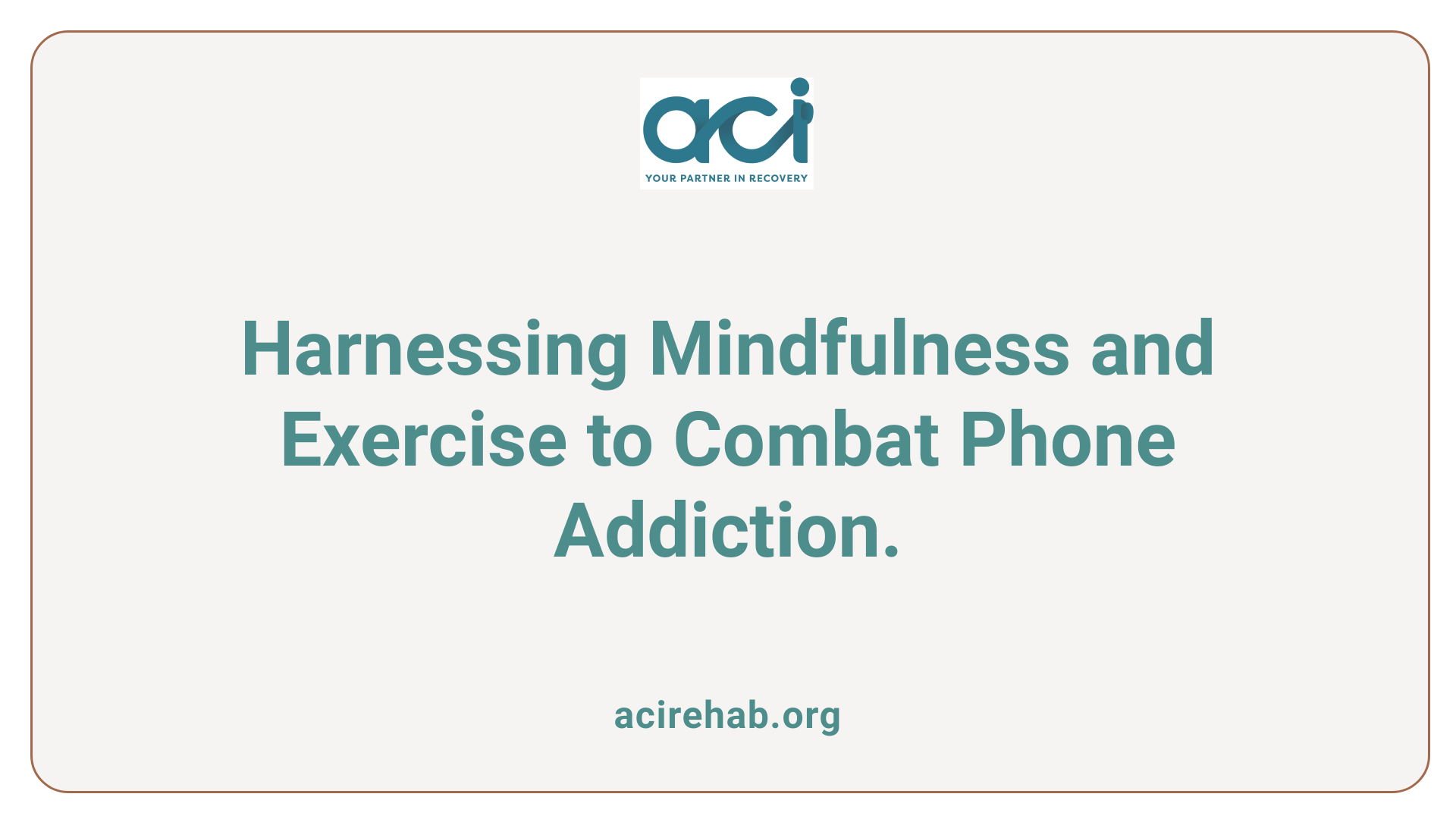
What strategies can help manage phone addiction in the context of ADHD?
Managing phone addiction for individuals with ADHD requires a comprehensive approach that incorporates both mindfulness and physical activity.
Benefits of Mindfulness and Exercise for ADHD
Mindfulness practices, such as meditation and deep breathing, can significantly improve focus and self-control. Engaging in these activities helps reduce stress and anxiety, which are often heightened in those with ADHD. Regular mindfulness practice encourages awareness of one’s thoughts and behaviors, making it easier to recognize addictive phone habits.
On the other hand, physical exercise provides numerous benefits for ADHD management. Regular physical activity boosts dopamine levels naturally, countering the deficiency often seen in ADHD. This increase in dopamine can enhance mood, leading to improved focus and motivation. Activities like jogging, yoga, or even dancing can serve as effective distractions from phone use while promoting overall well-being.
Reducing phone dependency through lifestyle changes
To cultivate healthier habits, setting clear boundaries around phone usage is crucial. Establishing designated phone-free zones, particularly in areas like the bedroom, can significantly enhance sleep quality and reduce nightly disruptions caused by screens.
Additionally, creating routines that incorporate alternative activities—like reading, socializing, or pursuing hobbies—can help lessen the reliance on digital devices. Using technology wisely through ADHD-friendly apps can further support better time management by reminding individuals to take breaks or stay engaged in offline activities.
In combination with professional support strategies, mindfulness and exercise are effective tools to reduce phone dependency and improve overall functioning for those with ADHD.
Utilizing Digital Tools to Manage Screen Time
Apps for Tracking Screen Usage
Digital well-being tools have become essential for individuals with ADHD looking to manage their phone usage. Apps like Screen Time and Moment provide users with valuable insights into their daily screen time patterns. These applications track how long individuals spend on various apps, allowing them to set realistic usage goals aimed at reducing dependency. By identifying patterns of excessive usage, users can learn to adjust their habits gradually.
Features to Limit Phone Distractions
In addition to tracking apps, there are features designed to limit phone distractions. For instance, built-in tools on smartphones such as Apple’s Screen Time or Digital Wellbeing on Android allow users to set app limits. Users can assign specific times during the day when certain apps are inaccessible, promoting a focus on essential tasks. Moreover, distraction-blocking apps like Forest encourage users to stay focused by growing virtual trees during time periods when they do not use their phones.
Developing awareness of phone habits with these tools can lead to improved focus and overall mental well-being. With the right tools, individuals can create a healthier relationship with their smartphones, aiding in the management of ADHD symptoms.
Creating a Routine to Improve Focus and Productivity
Establishing Schedules for ADHD
Creating a structured daily routine can significantly aid individuals with ADHD in managing their symptoms. Establishing specific schedules for tasks helps provide clarity and predictability, which can enhance focus and diminish feelings of overwhelm. Routines can include planning out daily activities, setting reminders, and breaking down larger tasks into manageable steps. Utilizing organizational tools, such as planners or ADHD-friendly apps, can also facilitate task management, making it easier to stay on track.
Routine’s Role in Reducing Phone Dependency
A well-defined routine not only improves task completion but also plays a crucial role in curbing phone addiction. By designating specific times for phone use and creating phone-free periods throughout the day, individuals can significantly lower their screen time. These intentional breaks allow for engagement in other activities, such as exercise or hobbies, which can be crucial for mental well-being. Integrating mindfulness practices into daily routines can further assist individuals in becoming aware of their phone usage and developing healthier habits.
| Routine Impact | Focus & Productivity Improvements | Phone Dependency Reductions |
|---|---|---|
| Structured schedules provide predictability. | Enhances organization and task completion. | Limits impulsive phone checking. |
| Regular task breakdown reduces overwhelm. | Improves attention span during activities. | Creates more phone-free time for hobbies. |
| Incorporating mindfulness allows reflection. | Encourages thoughtful app engagement. | Supports establishing healthier usage patterns. |
Professional Support and Intervention for Phone Addiction
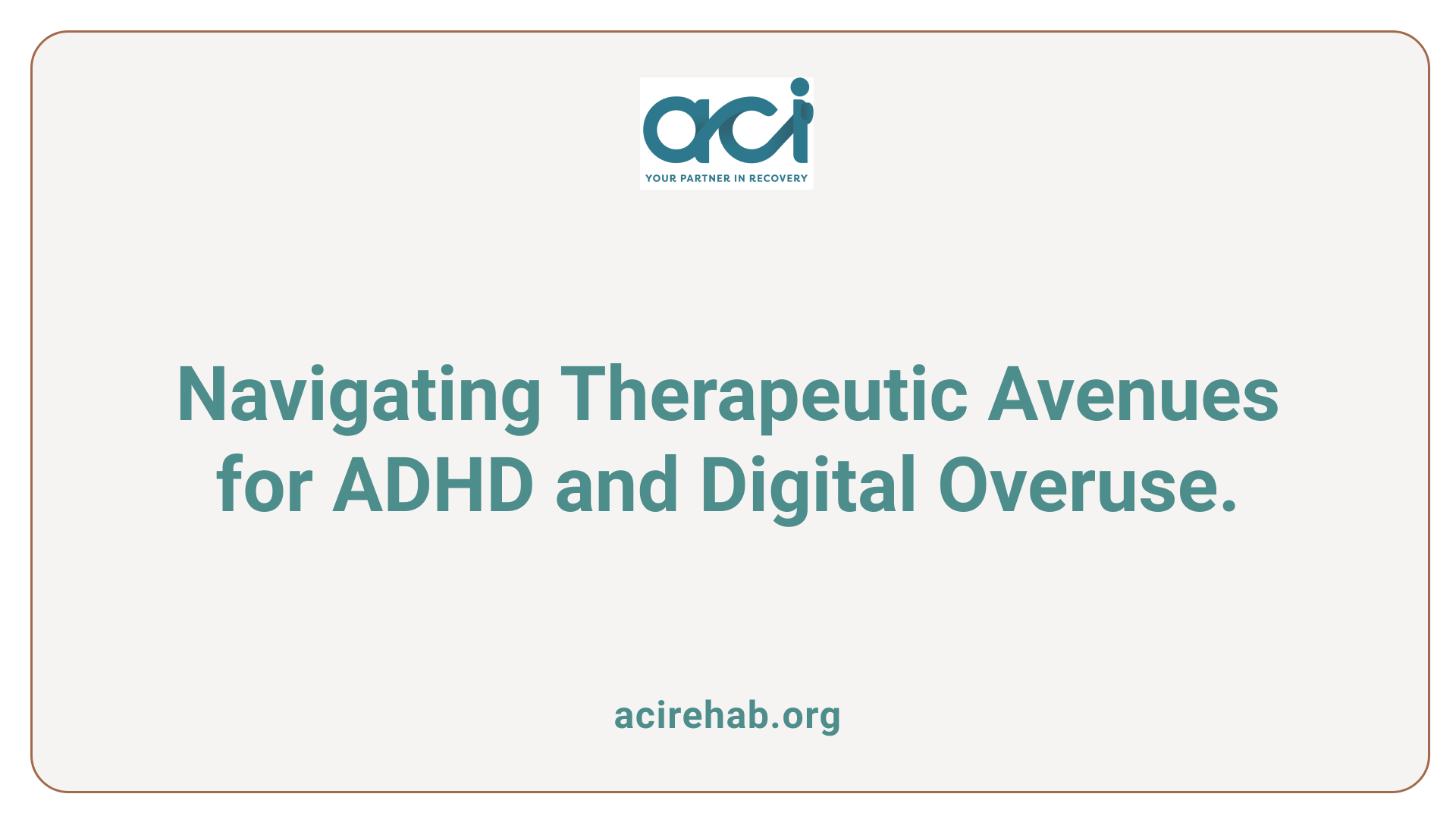
Therapies for ADHD and Phone Addiction
Seeking professional support is crucial for individuals grappling with both ADHD and phone addiction. Treatment options often include Cognitive Behavioral Therapy (CBT), which helps address behavioral patterns and develop coping mechanisms tailored for managing impulsivity associated with ADHD. Strategies within therapy may involve mindfulness exercises, cognitive restructuring, and enhancing self-awareness regarding phone habits.
In addition to CBT, therapists may recommend peer support groups to foster community and share experiences. These groups can be particularly beneficial since they allow individuals to connect with others facing similar challenges, even though ADHD-specific support groups may be rarer.
When to Seek Professional Help
Recognizing when to seek help can be a critical turn in managing phone addiction effectively. Signs that professional intervention may be necessary include:
- Neglecting responsibilities: Struggling to meet work or personal commitments due to phone usage.
- Persistent anxiety or irritability: Experiencing distress when separated from the phone or unable to use it.
- Impaired relationships: Noticing a decline in the quality of in-person relationships or communication due to excessive screen time.
In cases where self-help strategies don’t yield sufficient progress, consulting a therapist can provide tailored strategies, medication management, and deeper insights into managing ADHD symptoms alongside phone addiction.
Identifying and Addressing Triggers for Excessive Phone Use
Understanding Triggers
Identifying why you reach for your phone is crucial for managing smartphone addiction, especially for individuals with ADHD. Common triggers may include feelings of stress, anxiety, or boredom. For many, the immediate gratification that comes from checking notifications can serve as a short-term distraction from uncomfortable emotions or tasks that feel overwhelming.
Establishing a deeper awareness of these triggers can empower individuals to take proactive measures. Keeping a journal to track phone usage alongside emotions or activities can provide insights into when and why these habits arise.
Reducing Dependency Through Awareness
Once you understand your triggers, you can implement strategies to reduce dependency on your device. Start by creating clear usage goals for your phone, such as limiting use during certain hours or designating phone-free times, like during meals or before bed. Setting up boundaries, such as keeping the phone out of the bedroom, can foster better sleep quality and improve focus.
Gradual changes can also be more sustainable. Instead of drastic measures, slowly decrease your phone time, perhaps designating one day a week as a no-phone day. Practicing mindfulness techniques, like deep breathing or meditation, can also enhance your ability to cope with urges to pick up your phone. If these strategies feel insufficient, seeking professional help can provide tailored approaches to better manage phone behaviors and ADHD symptoms.
Protecting Mental Health from the Impacts of Phone Addiction
Effects on mental health
Phone addiction poses significant risks to mental health, particularly for individuals with ADHD. Excessive smartphone use can exacerbate symptoms such as impulsivity and inattention, leading to decreased productivity and strained social relationships. Users often exhibit anxiety or irritability when separated from their devices, mirroring ADHD behaviors. The constant availability of stimulation from smartphones can lead to an over-reliance on digital engagement, resulting in neglect of in-person interactions and real-world responsibilities.
Moreover, studies show that individuals with ADHD are more prone to phone addiction due to lower dopamine levels, which drive the pursuit of immediate gratification and stimulation through digital content. This reliance can create a cycle where individuals neglect their mental well-being, further deteriorating their symptoms and overall mental health.
Strategies to protect mental well-being
To combat smartphone dependency and protect mental health, actionable strategies can be implemented:
- Establish Usage Limits: Create clear boundaries for phone use, such as "no phones during meals" or designating a phone-free zone in the bedroom.
- Engage in Alternative Activities: Pursue screen-free hobbies like exercise, reading, or engaging with nature to fulfill needs for interaction and engagement without digital devices.
- Set Timers for Phone-Free Periods: Use timers to encourage breaks from screens, helping to build attention stamina.
- Utilize Digital Tools: Employ apps to monitor screen time or block distractions, encouraging mindful engagement with technology.
- Seek Professional Help: For those struggling significantly with smartphone use, therapies like cognitive-behavioral therapy (CBT) can provide effective coping strategies.
By taking these steps, individuals can foster healthier habits, ultimately enhancing their mental well-being while managing ADHD symptoms.
Understanding the Role of Dopamine in ADHD and Phone Addiction
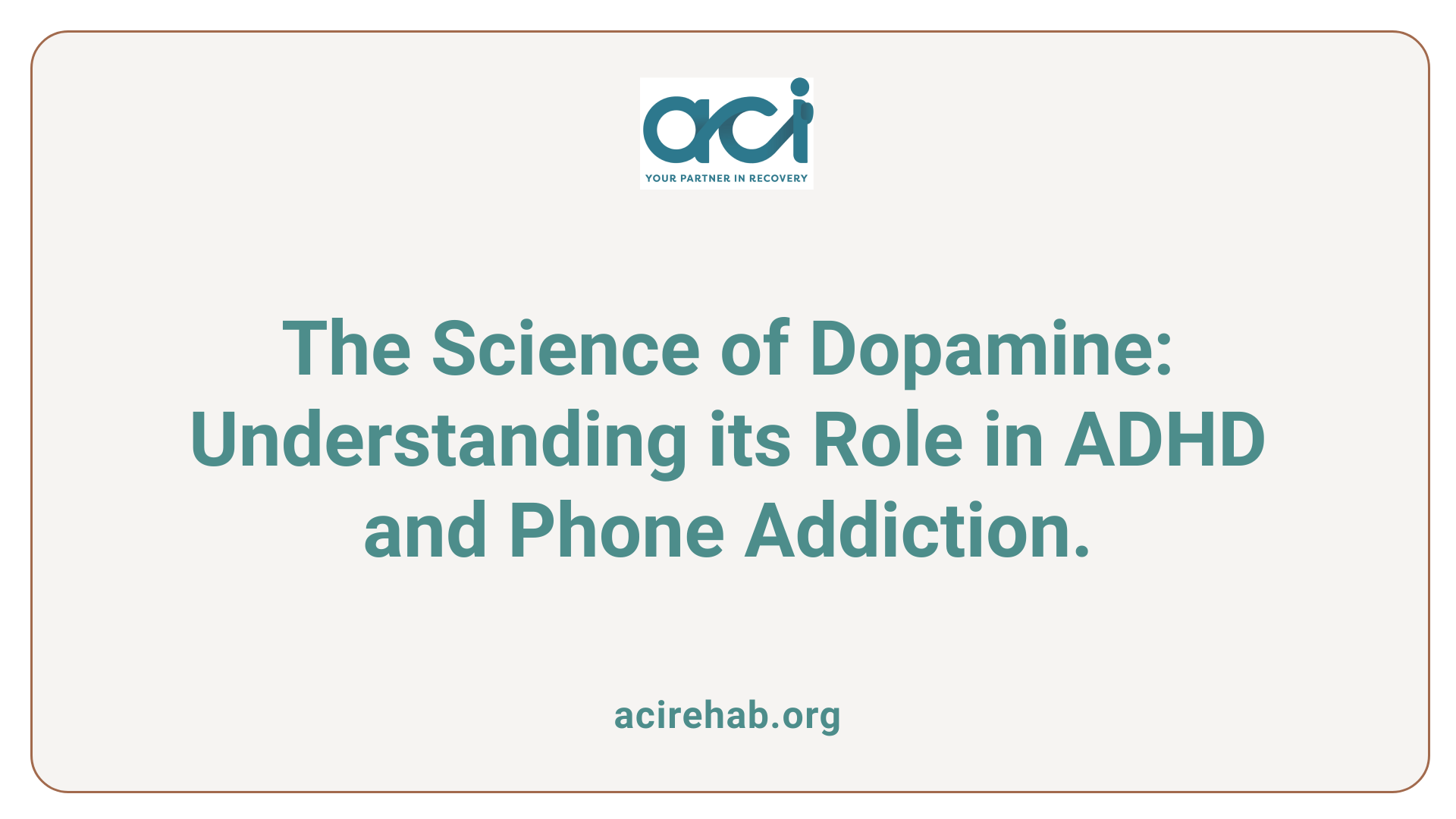
Dopamine Levels and ADHD
ADHD is characterized by lower levels of dopamine, a neurotransmitter that plays a crucial role in reward and pleasure. This deficiency often leads individuals with ADHD to seek out stimulation through engaging activities, such as using smartphones. The need for instant gratification can create a compelling attraction to the constant influx of notifications and social media interactions, increasing the likelihood of phone addiction.
How Phone Usage Affects Dopamine
Smartphones provide a quick release of dopamine through immediate rewards, whether it’s likes on social media or new content updates. For individuals with ADHD, the brain’s response to these instant rewards can exacerbate impulsive behaviors and distractibility, making it harder to manage daily responsibilities. The cycle of seeking dopamine-driven stimulation through phone usage can lead to a dependency that diminishes focus and negatively impacts mental well-being.
| Aspect | ADHD Characteristics | Phone Usage Effects |
|---|---|---|
| Dopamine Responsiveness | Lower levels, impulsivity | Immediate reward-seeking behaviors |
| Stimulation Seeking | Higher propensity for addiction | Increased distraction and inattention |
| Impact on Focus | Difficulty in maintaining attention | Reduced cognitive capacity, poor time management |
Navigating Social Relationships and Phone Addiction in ADHD
Impact on Personal Relationships
Phone addiction can have a profound impact on personal relationships for individuals with ADHD. The constant engagement with smartphones often leads to neglecting in-person interactions. This can trigger feelings of isolation, as essential social bonds may deteriorate when one is preoccupied with their device.
Excessive screen time may also exacerbate symptoms of ADHD, such as impulsivity and inattention, complicating effective communication and connection with others. When phone usage overshadows real-life engagement, the quality of conversations diminishes, resulting in misunderstandings and frustration among friends and family.
Improving Interactions and Connections
To strengthen social relationships, individuals with ADHD can take proactive steps to manage their phone use. Establishing no-phone zones during social gatherings, enforced for an hour or two, allows for deeper conversations without distractions. Engaging in activities like group sports or hobbies can also foster connections while minimizing phone dependency.
Employing digital well-being tools, such as screen time trackers, can raise awareness of usage patterns and identify triggers for phone reliance. By setting specific times for phone use and committing to tech-free family evenings, individuals can build stronger ties with loved ones. Small adjustments, such as reflecting on how smartphones impact interactions, can lead to improved relationships and mental well-being.
Practical Tips for Parents to Manage Their Children’s Phone Use
Setting Rules and Routines
Establishing clear rules around phone usage can significantly help children with ADHD manage their screen time. For instance, parents can set designated phone-free times, such as during meals or homework hours, to minimize distractions. Additionally, creating a daily routine that includes tech-free activities can encourage a balanced lifestyle, allowing room for hobbies, exercise, and family time.
Facilitating Better Phone Habits in Children
Parents can model healthy phone habits to foster similar behaviors in their children. This includes limiting their own phone use, especially during family conversations or activities. Utilizing parental controls and phone tracking apps can help monitor usage and set appropriate limits on screen time. Encouraging physical activities or engaging with non-digital hobbies can also provide fulfilling alternatives to excessive screen time.
To make phone management manageable, consider these practical tips for parents:
- Implement tech-free days: Designate one day a week without phones to engage in family activities.
- Set bedtime restrictions: Prevent technology use before bed to improve sleep quality by reducing blue light exposure.
- Encourage diverse pursuits: Create a balanced schedule that includes different activities, such as sports, reading, or outdoor play.
By actively participating and showing understanding, parents can create an environment that supports their children’s focus and well-being.
Taking Charge of Technology Habits
Breaking the cycle of phone addiction, especially within the context of ADHD, requires intentional strategies and support. By understanding the unique challenges posed by ADHD, individuals can implement effective solutions that combine boundaries, mindfulness, professional help, and lifestyle changes to forge a healthier relationship with technology. These steps not only enhance attention and focus but also contribute significantly to improved life quality and mental health stability.
References
- How To Break Phone Addiction ADHD? – Attain Behavioral Health
- How to Break Phone Addiction ADHD? – Niagara Recovery
- Adult ADHD Diagnosis: My Phone Addiction — Explained
- How to Break Phone Addiction ADHD? – Urban Recovery
- How To Break Phone Addiction Adhd – Dove Recovery
- Internet Addiction and ADHD – CHADD
- ADHD And Phone Addiction: Are They Connected? – Joon
- How to Stop Being ‘Addicted’ to Your Phone: 5 Tips | Psych Central

